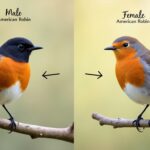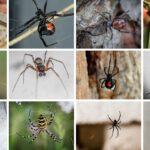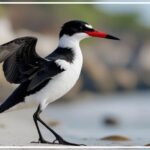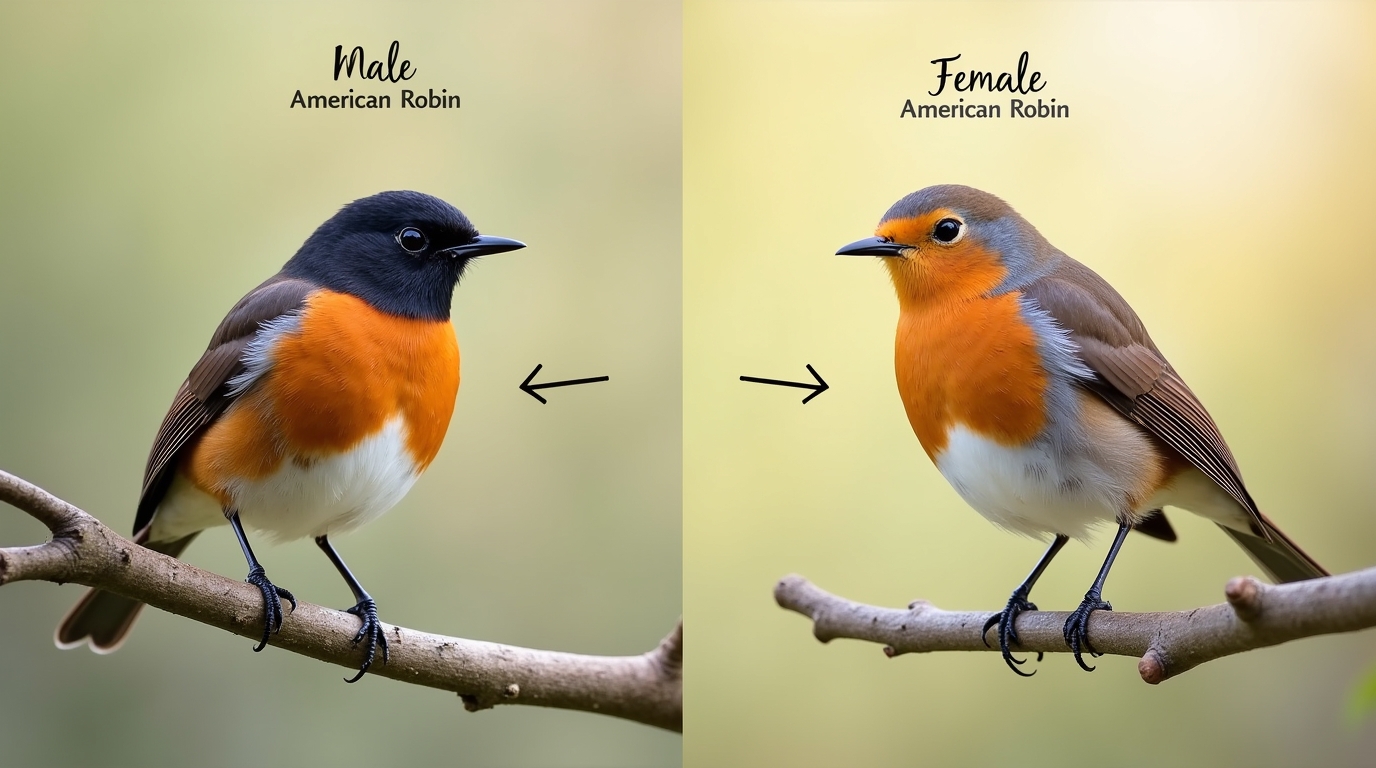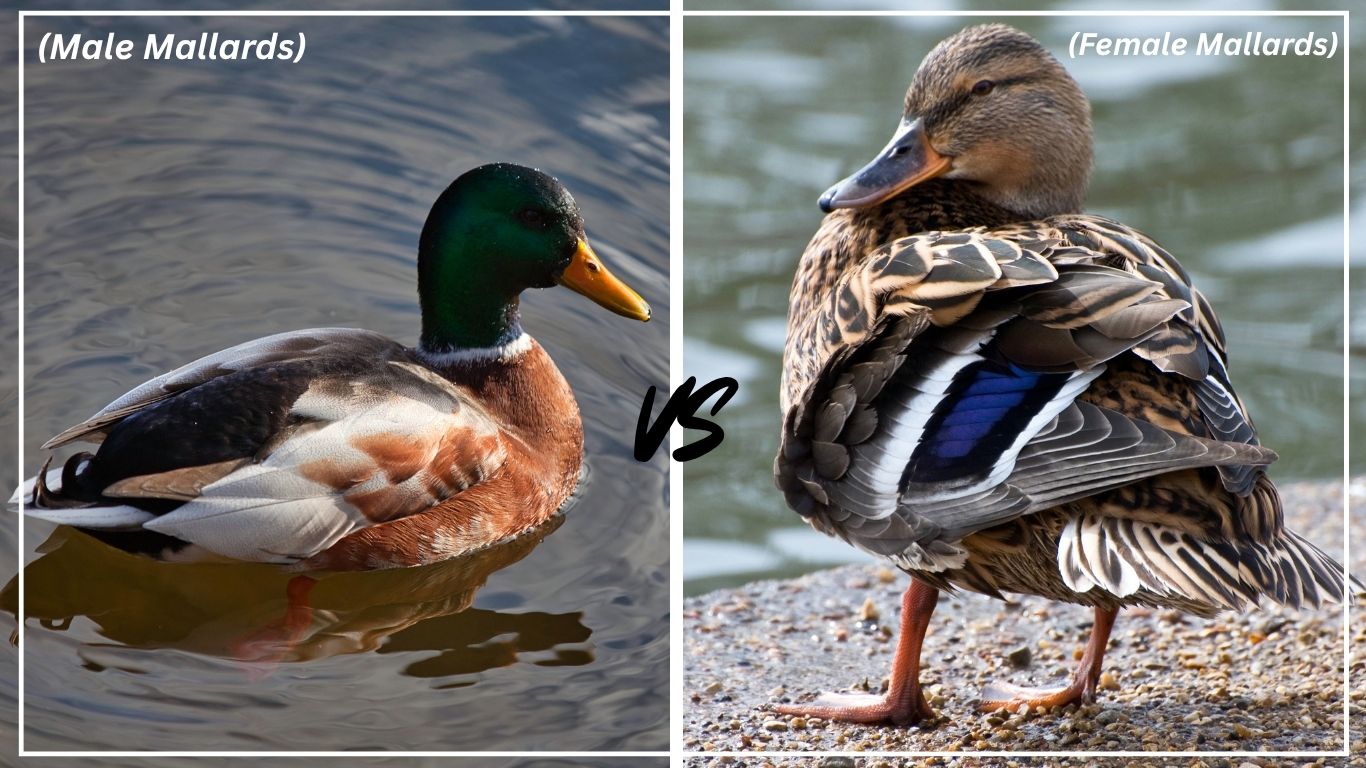Black skimmers are among the most unique and graceful birds found along coastal waters. Known for their striking beaks and unusual feeding style, these birds have many surprising traits that set them apart from other seabirds. From their nesting habits to migration routes and conservation status, this guide shares 26 short and fascinating facts that offer a complete snapshot of the black skimmer’s world.
1. Black Skimmer’s Unique Beak
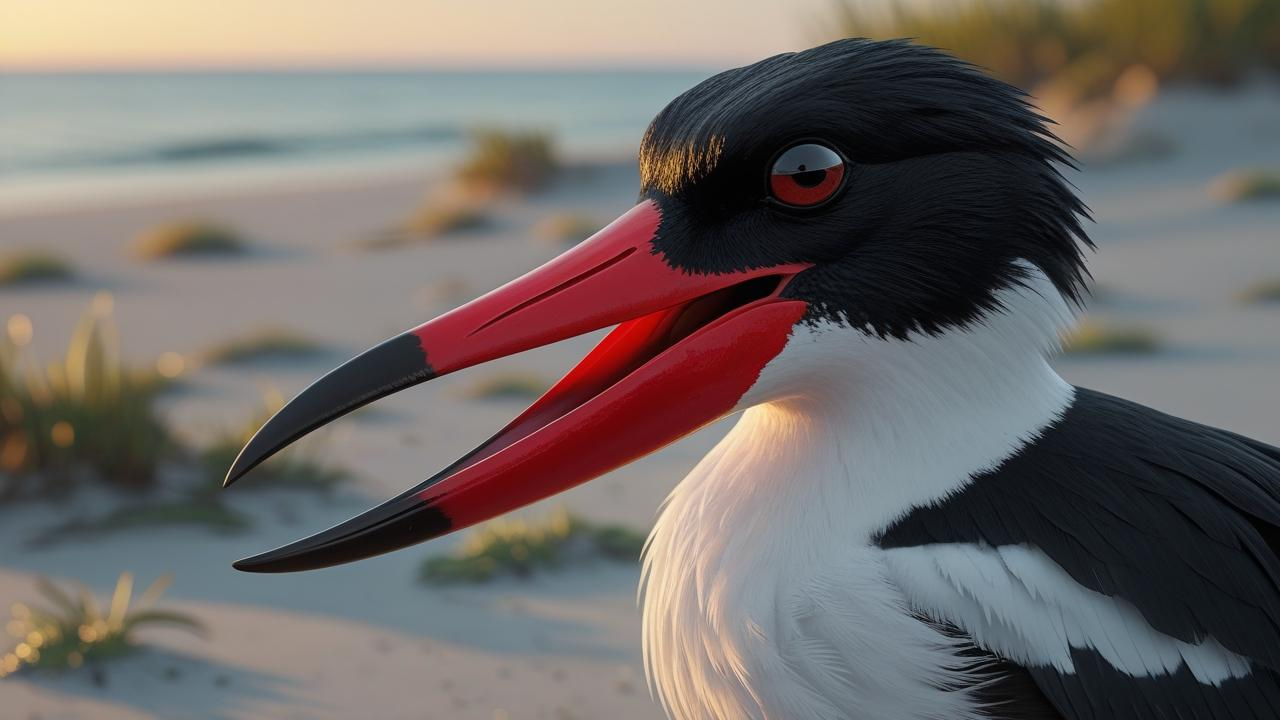
The black skimmer is famous for its unusual beak—unlike most birds, its lower mandible is longer than the upper one. This adaptation allows it to skim the water surface while flying, snapping shut when it touches a fish. The striking orange and black coloration of the bill also makes it easily recognizable. This specialized beak design is what sets black skimmers apart from other seabirds.
2. Black Skimmer Feeding Behavior
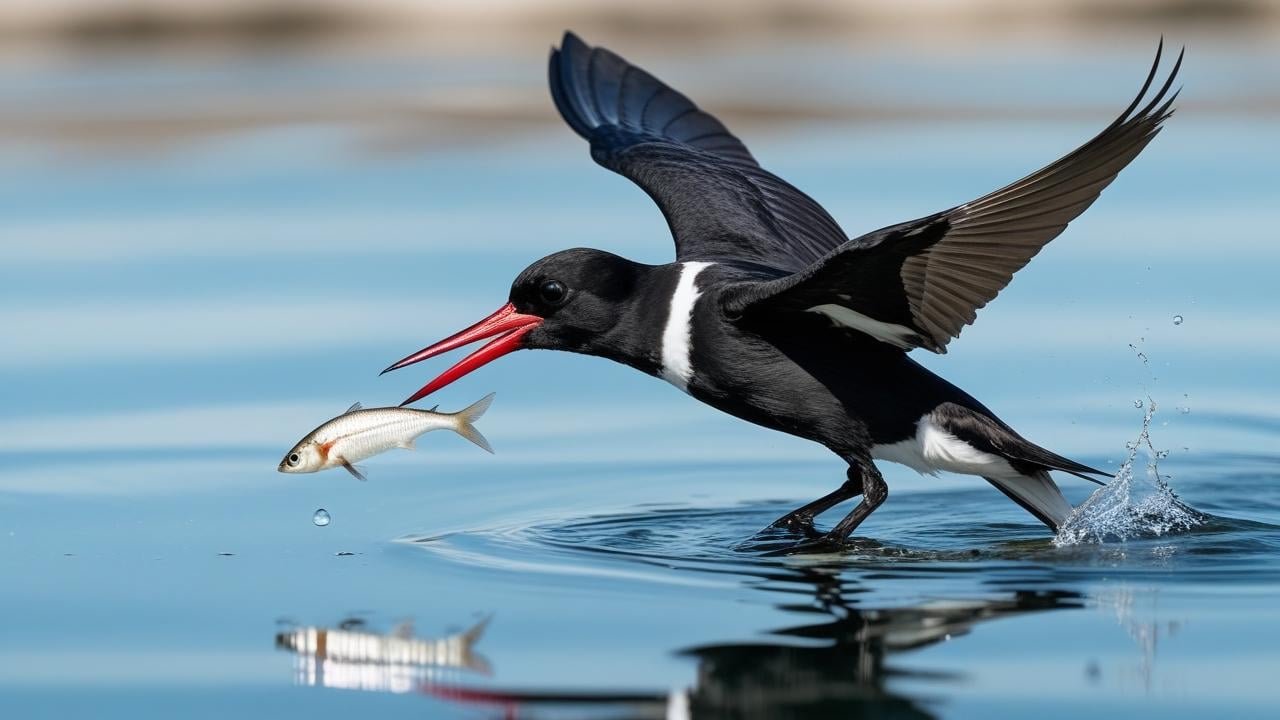
Black skimmers feed by flying just above the water, dragging their long lower beak along the surface. When the bill touches a fish, it snaps shut instantly. This method, called skimming, is rare among birds and helps them catch small fish in shallow coastal waters.
3. Where Black Skimmers Live
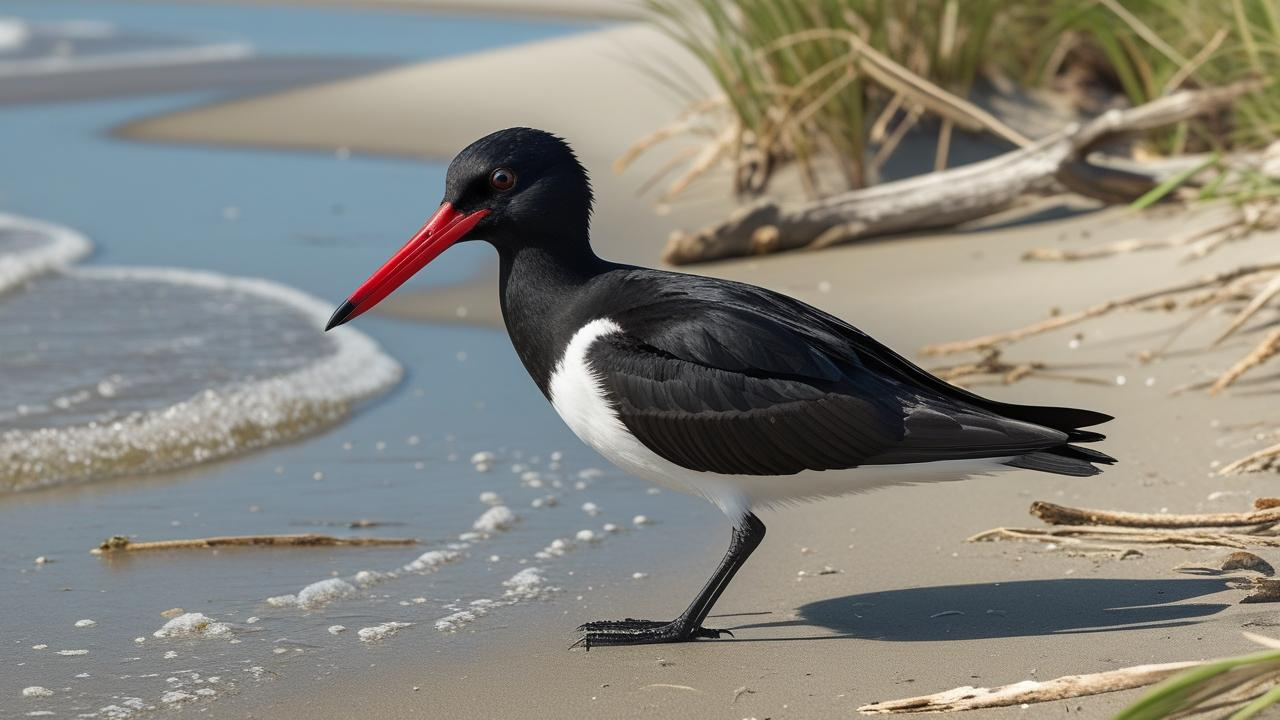
Black skimmers are typically found along coastal beaches, estuaries, and sandbars. In the U.S., they inhabit Atlantic and Gulf coasts, while in winter, many migrate to Central and South America. They prefer quiet, open areas near water for nesting and feeding.
4. Black Skimmer Nesting Habits
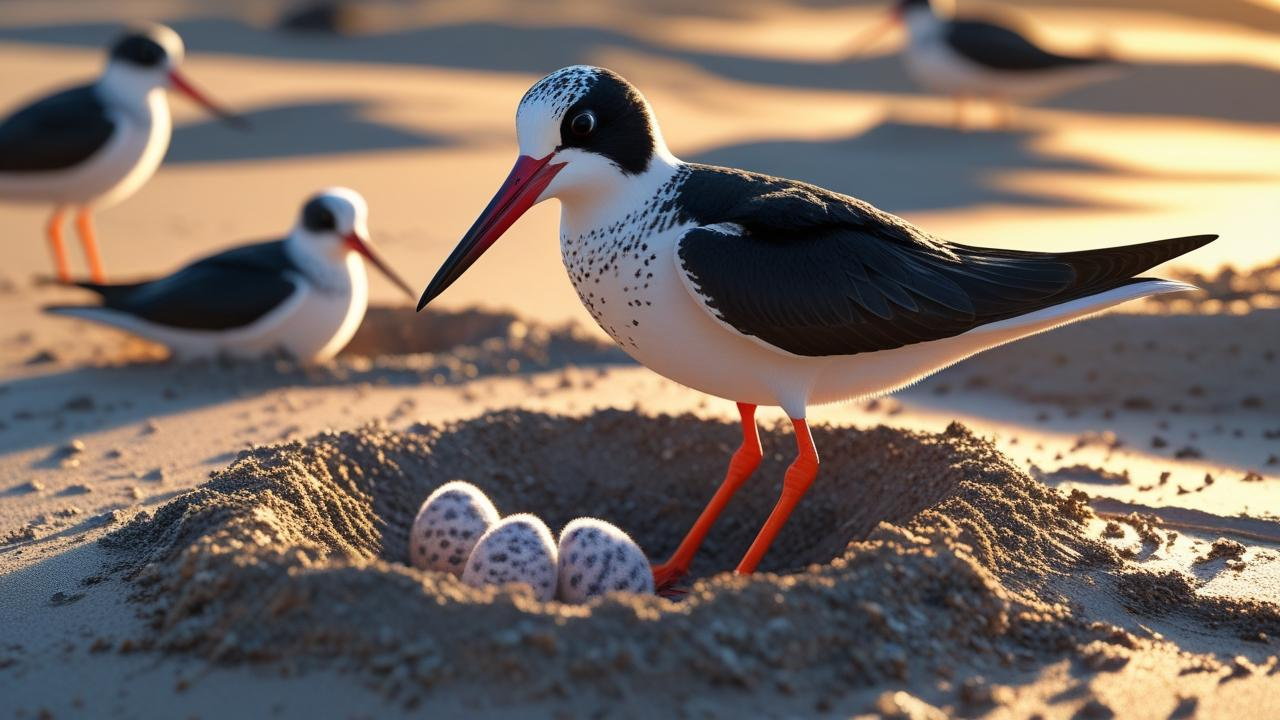
Black skimmers nest in colonies on sandy beaches or flat islands, laying eggs directly in shallow scrapes. They often share nesting grounds with other seabirds. Nesting season starts in late spring, and both parents take turns incubating eggs and feeding the chicks.
5. Migration of Black Skimmers
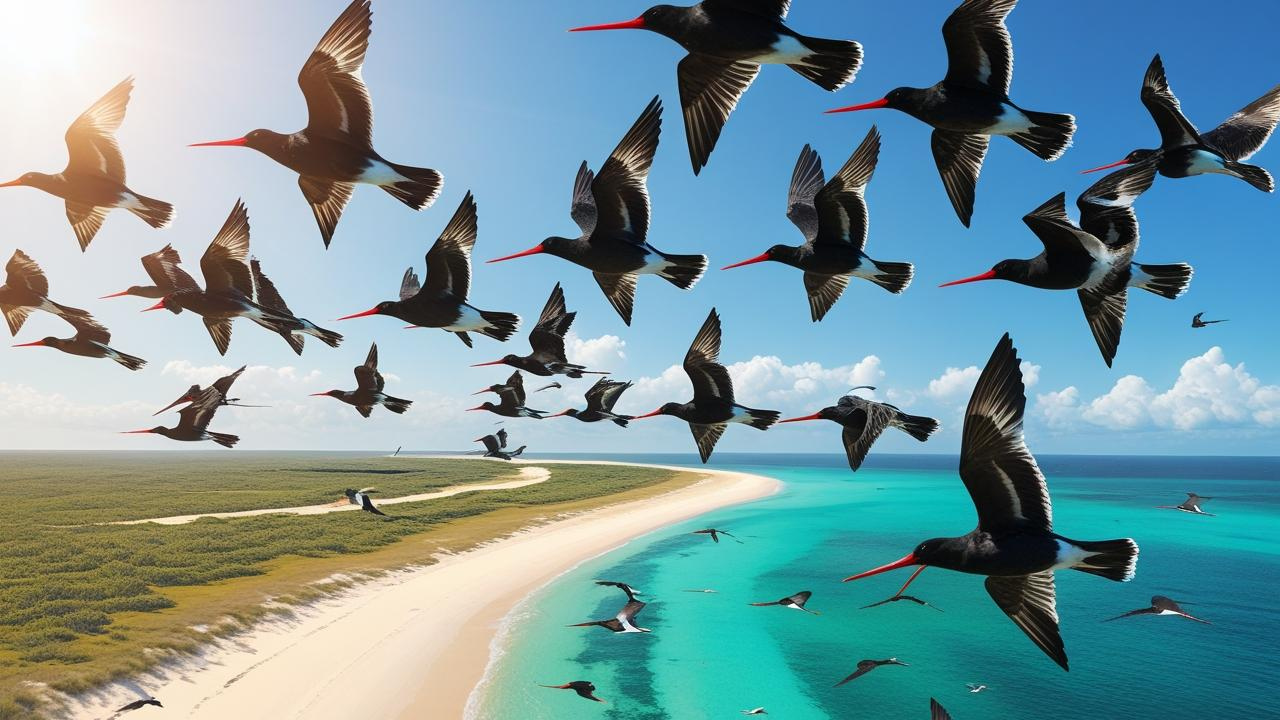
Black skimmers are migratory birds. Populations in the northern parts of their range, such as the U.S., fly south for the winter to warmer coasts in the Caribbean, Mexico, and South America. They return to breeding areas in spring and summer.
6. What Black Skimmers Eat

Their diet mainly consists of small fish, such as anchovies, killifish, and minnows. Occasionally, they also eat shrimp or aquatic insects. They hunt by skimming over shallow waters at dawn and dusk when fish are closer to the surface.
7. Are Black Skimmers Endangered?
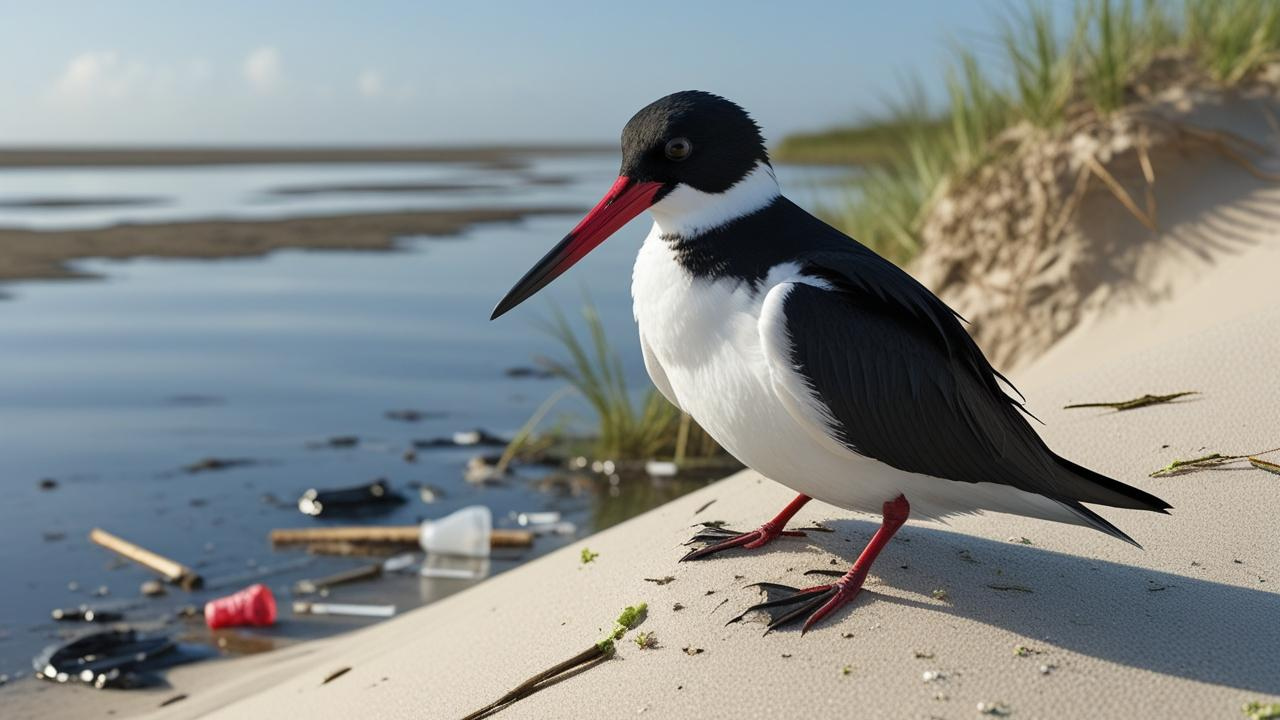
Black skimmers are listed as near threatened due to habitat loss, human disturbance, and rising sea levels. While not officially endangered, their populations are declining in many areas. Conservation efforts focus on protecting nesting sites and limiting human activity during breeding seasons.
8. How Long Black Skimmers Live
In the wild, black skimmers can live up to 20 years, though most survive around 5 to 10 years. Their lifespan depends on food availability, habitat safety, and threats like predators or human interference. Banding studies have helped track their longevity.
9. Black Skimmer vs. Tern
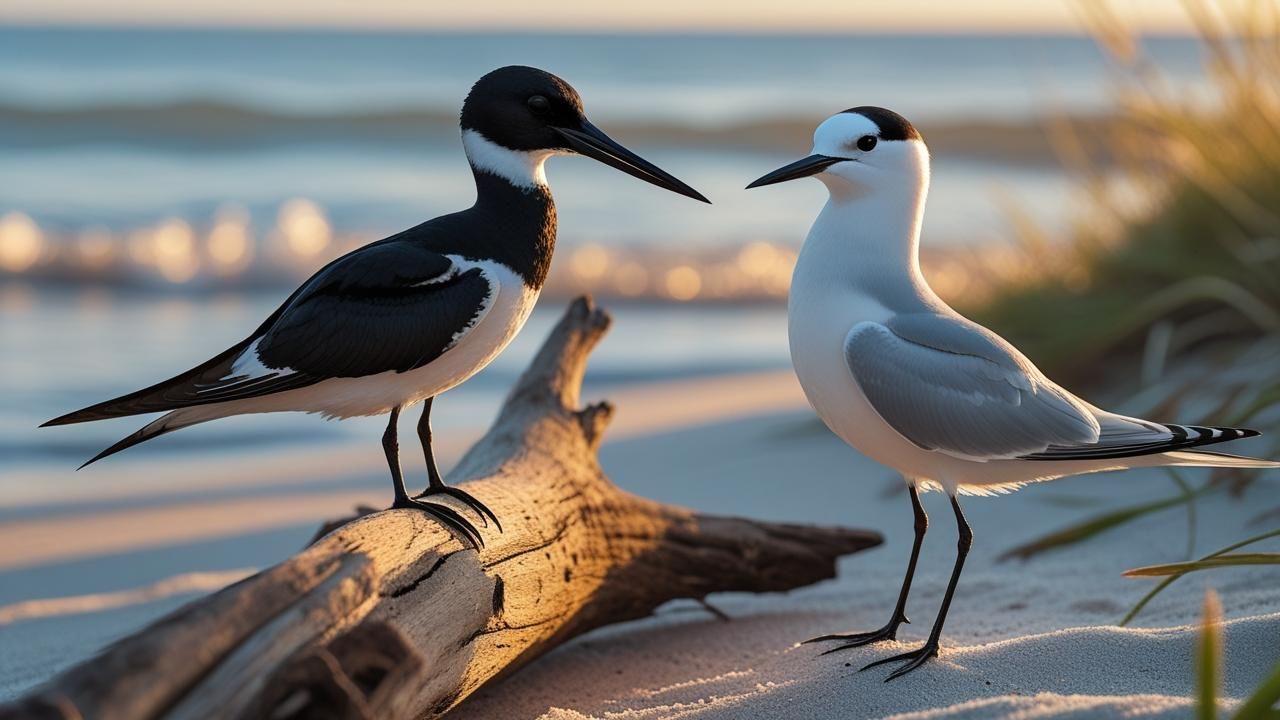
Though often mistaken for terns, black skimmers belong to a different genus and have unique features. Unlike terns, skimmers have a distinctive bill and flight pattern. Terns dive for food, while skimmers glide low and use their beak to catch fish.
10. What a Group of Black Skimmers Is Called
A group of black skimmers is called a “conspiracy”—a quirky and lesser-known term. They often gather in colonies, especially during breeding. These groups can include dozens or even hundreds of birds nesting together in close quarters on sandy shores.
11. Why Black Skimmers Skim
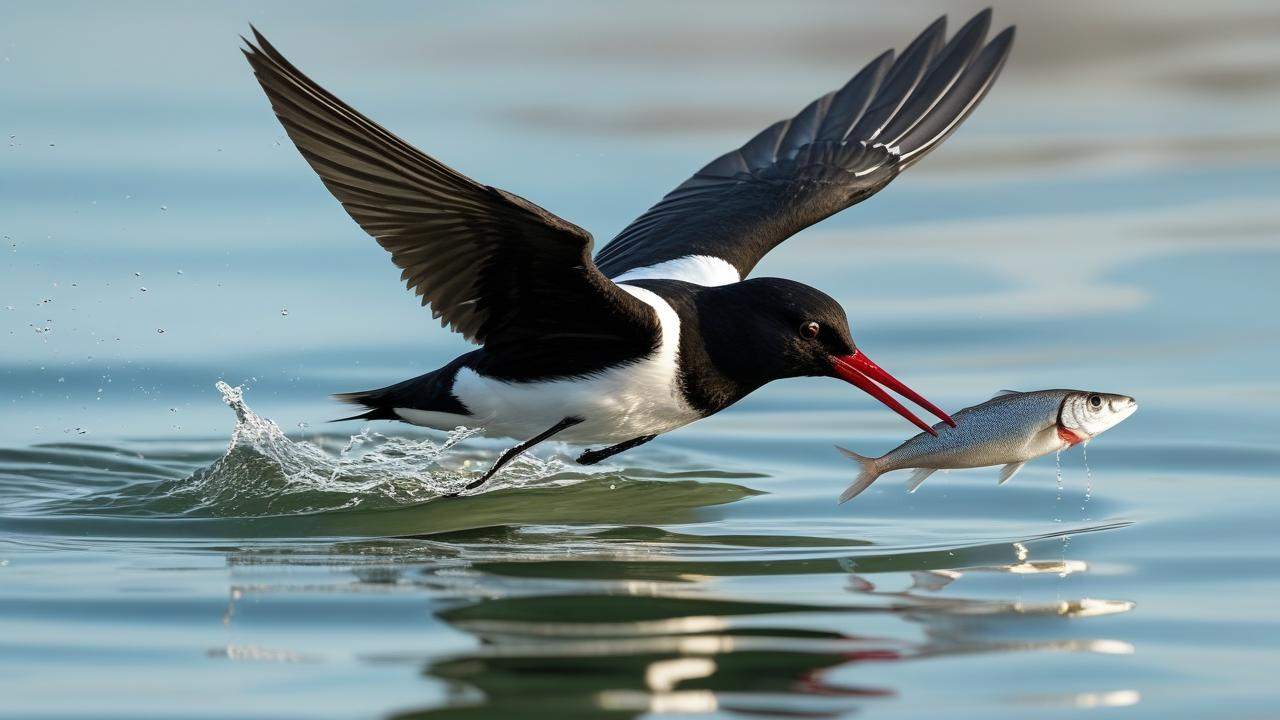
Black skimmers skim to catch food using their specialized lower mandible. By flying close to the water and dragging their beak, they can feel and instantly snap shut on fish. This feeding method is energy-efficient and highly adapted for calm, shallow waters.
12. Black Skimmer Appearance
Black skimmers have striking black-and-white plumage, a bold orange-and-black bill, and red-orange legs. Their lower mandible is noticeably longer, and their eyes have a unique vertical slit pupil—rare among birds. They appear sleek in flight, with long wings and graceful movements.
13. Do Black Skimmers Mate for Life?
Black skimmers typically form monogamous pairs during the breeding season, but they do not mate for life. Pairs stay together while nesting and raising chicks, then often separate afterward. Loyalty is seasonal, and mates may change from year to year.
14. Are Black Skimmers Rare?
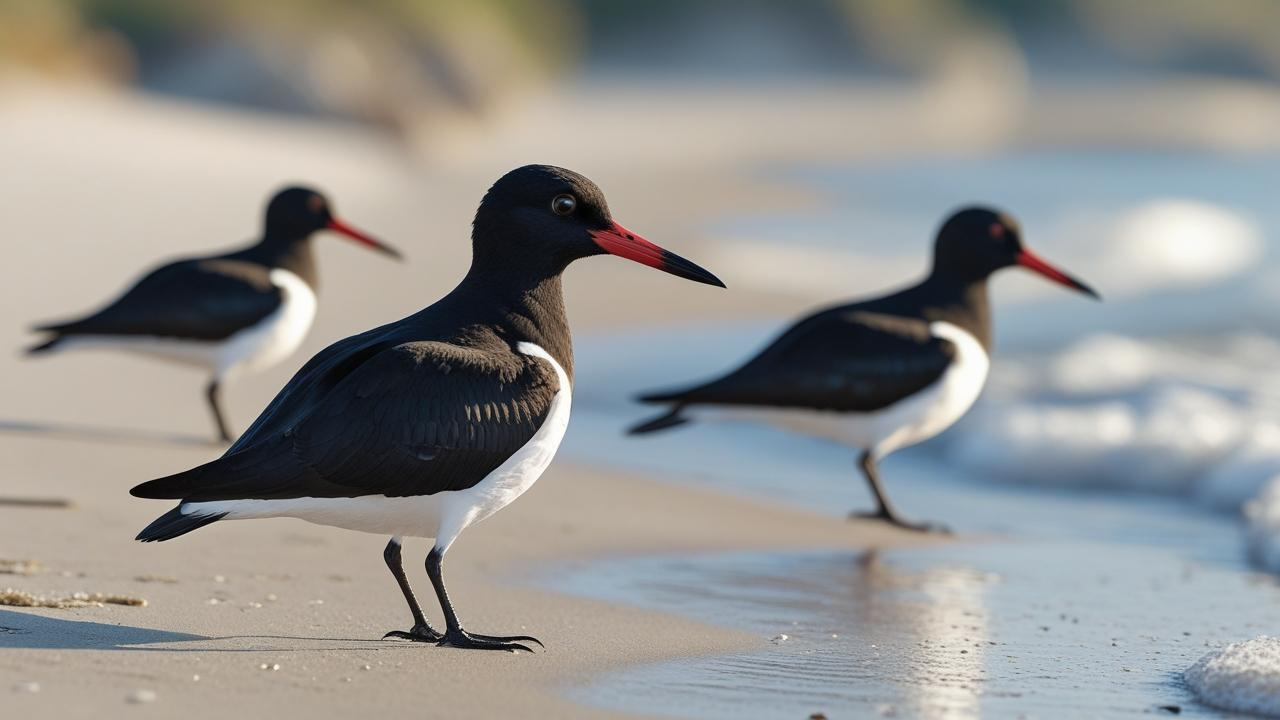
Black skimmers are not globally rare, but their populations are declining in certain areas. They are more common in protected or undisturbed coastal regions. Their dependence on specific nesting habitats makes them vulnerable to disturbance, which contributes to local population drops.
15. Where Black Skimmers Are Found
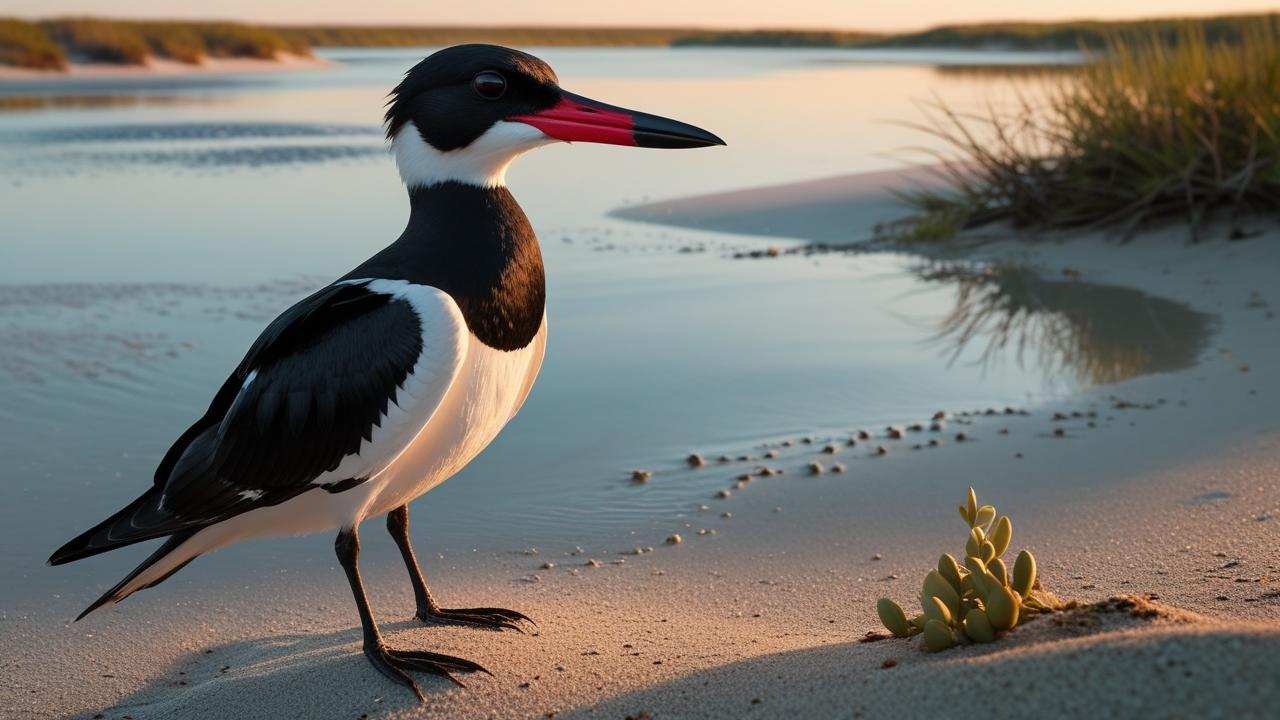
Black skimmers are found along the Atlantic and Gulf coasts of the U.S., Mexico, Central America, and much of South America. They inhabit shorelines, estuaries, lagoons, and sandbars—places with open water for feeding and sandy ground for nesting.
16. Black Skimmer Breeding Season
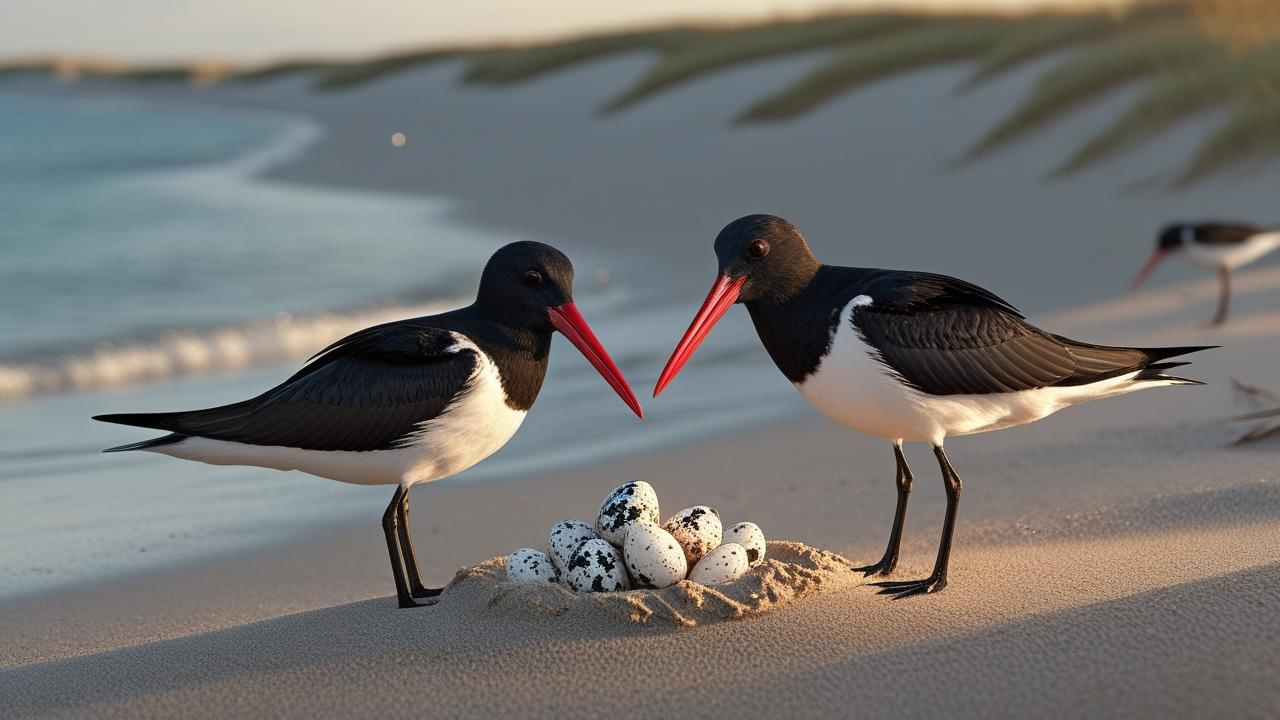
Black skimmers usually breed in late spring through summer, depending on location. They nest in colonies, often laying 2 to 4 eggs in shallow sand scrapes. Chicks hatch after about 3 weeks and are fed by both parents until they can fly.
17. Black Skimmers and Coastal Ecosystems
Black skimmers play a key role in coastal ecosystems by helping control small fish populations. Their presence also indicates a healthy shoreline environment. Because they nest in open areas, their colonies often attract researchers and conservationists monitoring habitat quality.
18. Threats to Black Skimmer Populations
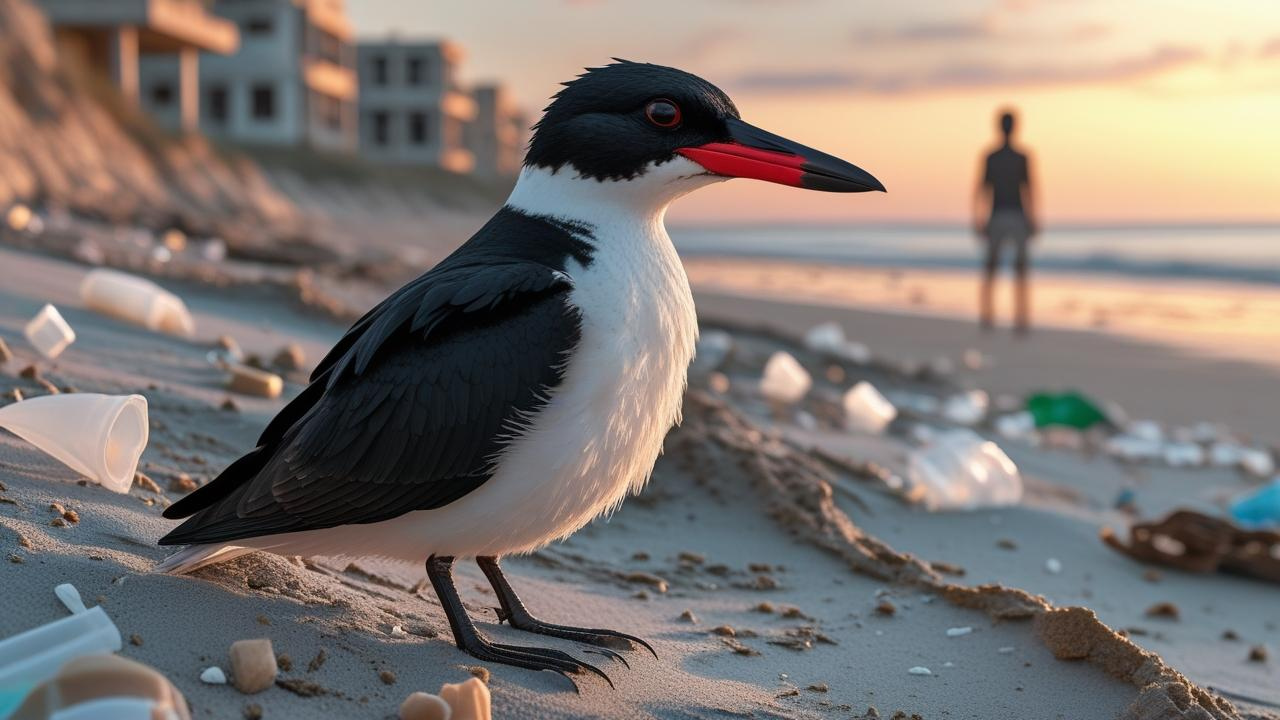
The biggest threats include habitat destruction, human disturbance, predation, and rising sea levels. Beach development, off-leash dogs, and recreational activities often destroy nesting grounds. Additionally, climate change increases flooding risks in low-lying breeding areas, reducing chick survival.
19. Are Black Skimmers Extinct?
No, black skimmers are not extinct, but their status is concerning. Populations have declined in many regions due to environmental stress and human activity. Conservation efforts aim to prevent them from becoming endangered through habitat protection and public awareness.
20. Drawing a Black Skimmer (Simple Guide)
To draw a black skimmer, start with a sleek body, long wings, and a straight, two-tone beak—longer on the bottom. Add black on the back and wings, white underneath, and finish with red-orange legs. Focus on the beak shape to make it recognizable.
21. What Kind of Creature Is a Black Skimmer?
A black skimmer is a species of seabird in the gull family (Laridae). It’s known for its long lower mandible and unique feeding style. Unlike ducks or shorebirds, skimmers are specialized flyers adapted to glide low over water while hunting fish.
22. What Is a Black Skimmer?
The black skimmer (Rynchops niger) is a coastal bird found in the Americas. It’s easily recognized by its black upperparts, white underparts, and scissor-like bill. It’s the only North American bird that feeds by skimming the water surface for prey.
23. Where Does the Black Skimmer Live?
Black skimmers live along coastal beaches, islands, estuaries, and lagoons. In the U.S., they are commonly found from New Jersey to Florida and along the Gulf Coast. During winter, they migrate to warmer regions like Mexico and South America.
24. Where Do Black Skimmers Nest?
Black skimmers nest in open, sandy or gravel areas, often near shallow waters. Their nests are just shallow scrapes in the ground. These locations are vulnerable to flooding and disturbance, which makes nesting success highly dependent on habitat protection.
25. Where Do Black Skimmers Migrate?
Black skimmers migrate to warmer coastal regions in winter. U.S. populations usually head south to the Gulf of Mexico, Central America, and northern South America. Migration ensures they have access to abundant food and suitable climates year-round.
26. Why Are Black Skimmers Endangered?
Black skimmers face threats from habitat loss, rising sea levels, human activity, and predators. Nesting on open beaches leaves them vulnerable to storms, flooding, and human interference. These combined threats have led to population declines in several regions.

